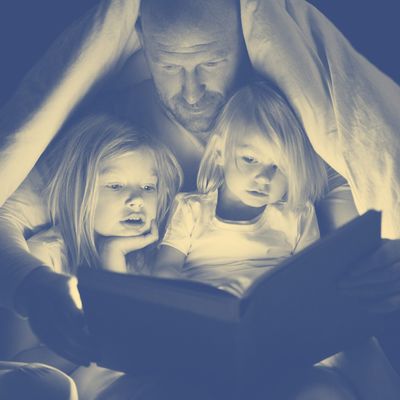
In the oldest version of the Snow White story, the evil queen gets her comeuppance via a pair of molten metal shoes, which she has to wear until she dies from the pain. The Grimm version of Cinderella has doves that peck out the stepsisters’ eyes. Hans Christian Andersen’s little mermaid grows legs only after drinking a potion that puts her in permanent, excruciating pain (and the prince ends up with someone else anyway).
Today’s Disneyfied fairy tales, in other words, have come a long way from their darker roots — in fact, as writer Alison Flood recently reported in the Guardian, roughly a third of parents will avoid a story altogether if reading it would mean exposing their kids to a scary character. Granted, the report was based on a less-than-scientific source — a small poll of around 1,000 adults in the U.K. — but it nevertheless raises an interesting question: Are those kids missing out on anything?
Some psychologists argue that the answer is yes: Scary stories, like nightmares, are a sort of dress rehearsal for real-life fear, helping kids learn to cope with the emotion in a low-stakes setting. “How can you feel safe and secure until you know what it’s like to be afraid?” psychologist Emma Kenny told the Guardian. “The world can be a scary place — children will get into situations where they’re told off by teachers, or fall out with friends. Knowing how to confront fear is a good thing.”
And sociologist Margee Kerr, a “scare specialist” who studies fear, told The Atlantic in 2012 that frightening experiences can be a helpful tool when it comes to developing confidence: “Think about the last time you made it through a scary movie, or through a haunted house. You might have thought, ‘yes! I did it! I made it all the way through!’’’ she said. “So it can be a real self-esteem boost.”
Age also isn’t a foolproof indicator for how a person will feel about scary material – some kids, like some adults, can enjoy the experience. A frightened brain will produce a cocktail of chemicals, including cortisol, the stress hormone, and adrenaline and noradrenaline, which are part of the fight-or-flight response. But it also produces dopamine, which is linked to pleasure and reward-seeking behavior — and the way our brains handle dopamine may influence how we feel about scary stories.
As the Washington Post’s Rachel Feltman has explained, “molecules called autoreceptors that sit on our nerve cells keep track of the abundance of the chemicals and tell our bodies when to slow down their production.” And research has suggested that “folks with fewer autoreceptors were more likely to seek out thrilling situations, possibly because they … get more dopamine out of a scary situation than other people do.” This is why horror movies and haunted houses can be terrifying and pleasurable simultaneously — and why the scary versions of well-known stories can have as much to offer kids as the Disneyfied ones.




